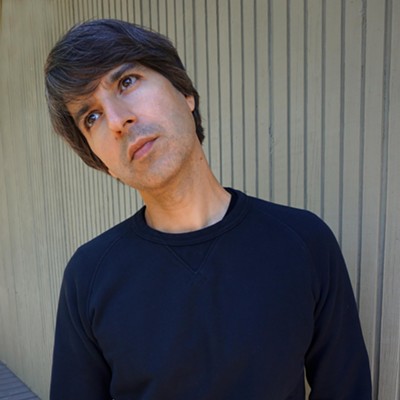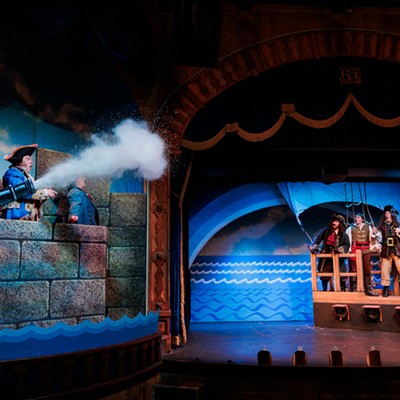When people think of places or time frames, an iconic image automatically pops up in their heads: The Grand Canyon is to Arizona what a flapper is to the 1920s. Photographs, drawings and even maps help shape the identity of places and people, and showcase important historical events.
Tucson native Matthew Buchholz added a quirky twist to these iconic images. In his Alternate Histories series, Buchholz takes old photos, vintage prints, outdated maps and even Christmas cards, and adds characters that weren't meant to be there: sci-fi zombies, robots and monsters. The result is the creation of a new history for each of the pieces.
Buchholz graduated from New York University with a degree in film and television. In 2009, he headed to Pittsburgh, where he developed an interest in the city's history.
"I started looking at old maps and 19th- and 20th-century prints of the city, and I was really captivated by the quality and beauty," Buchholz said. "Some of these don't see the light of day anymore, so I began to try to figure out a way to get people interested in them again."
Buchholz took an illustration of Pittsburgh's skyline circa 1870—and added a Godzilla-like monster walking across it. It led to him creating an entire collection that revolved around Pittsburgh. Since then, Buchholz has dug up historical pictures, such as John Trumbull's painting of the signing of the Declaration of Independence, in which Buchholz placed a robot next to Thomas Jefferson and Benjamin Franklin.
Goofy sci-fi creatures have lived in Buchholz's mind since he was a child. Growing up in the 1990s, he was infatuated by the TV-show Mystery Science Theater 3000, in which a man and his robots are forced to watch poorly made movies, often of the sci-fi variety. The cheap monster suits and the spray-painted cardboard meant to resemble robots eventually made their way from Buchholz's childhood memories into the work he does today.
"I have always loved that type of handmade aesthetic of old sci-fi movies, even if the films themselves aren't that good," Buchholz said. "There is something about spaceships hanging from wires. That aesthetic is very playful to me."
Buchholz spends days, sometimes weeks, searching for old illustrations, photographs and maps. However, anything he adds to these pieces, whether it's a nerdy robot or a snakelike monster, is secondary. He likes having the original piece remain the main focus, with the creatures adding an unexpected surprise. The challenge is to find pieces that are already digitalized, or online, or pieces that he's able to buy and digitalize himself.
Buchholz makes the creatures look like they belonged in the map or photo in the first place.
"It takes a lot of practice to make the final pieces look seamless," Buchholz said. "But the hard work pays off, because it looks like the zombies or robots were meant to be in maps and photos since the 1800s or whatever era they're from."
The final results are always playful. Although Buchholz has received requests to add gore, such as monsters ripping people's heads off, he chooses to stay true to the 1950s sci-fi movie aesthetic he loved as a child. Creating death and destruction doesn't appeal to him.
Buchholz is returning to Tucson, his hometown, for the first time since he began his artistic journey. For his one-day show, Buchholz has been working on maps and illustrations that represent our city and state. One piece consists of an illustration of Mission San Xavier del Bac—with a giant reptile behind it holding a stick. A map of Pima County from 1893 now highlights areas of zombie infestations.
Buchholz said he's been looking forward to a show in Tucson since his first taste of national success. Because Pop-Cycle has sold some of his prints and cards, it seemed natural for the shop to host his first Old Pueblo show. He said the timing is also good, because he recently finished The Alternate History of the World, a soon-to-be-published book of prints featuring iconic images from around the globe.
"At the end of the day, Tucson is always going to be my home," Buchholz said. "I am very excited to bring the work that I am passionate about and show it to my hometown and the people I grew up with. I love face-to-face shows, because it gives me the opportunity to see people's reactions to my work, and I can't wait to see Tucson's reaction to it."







